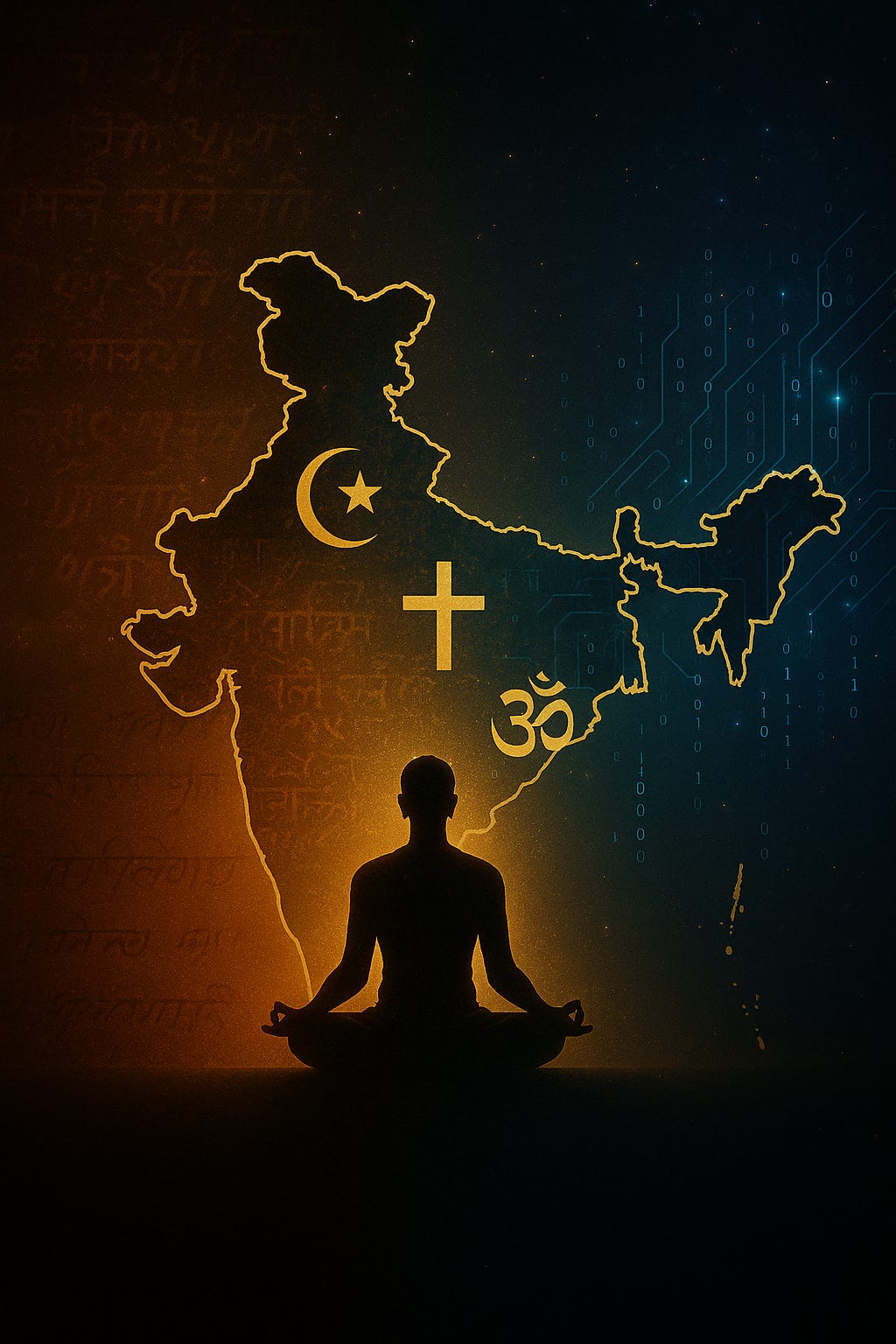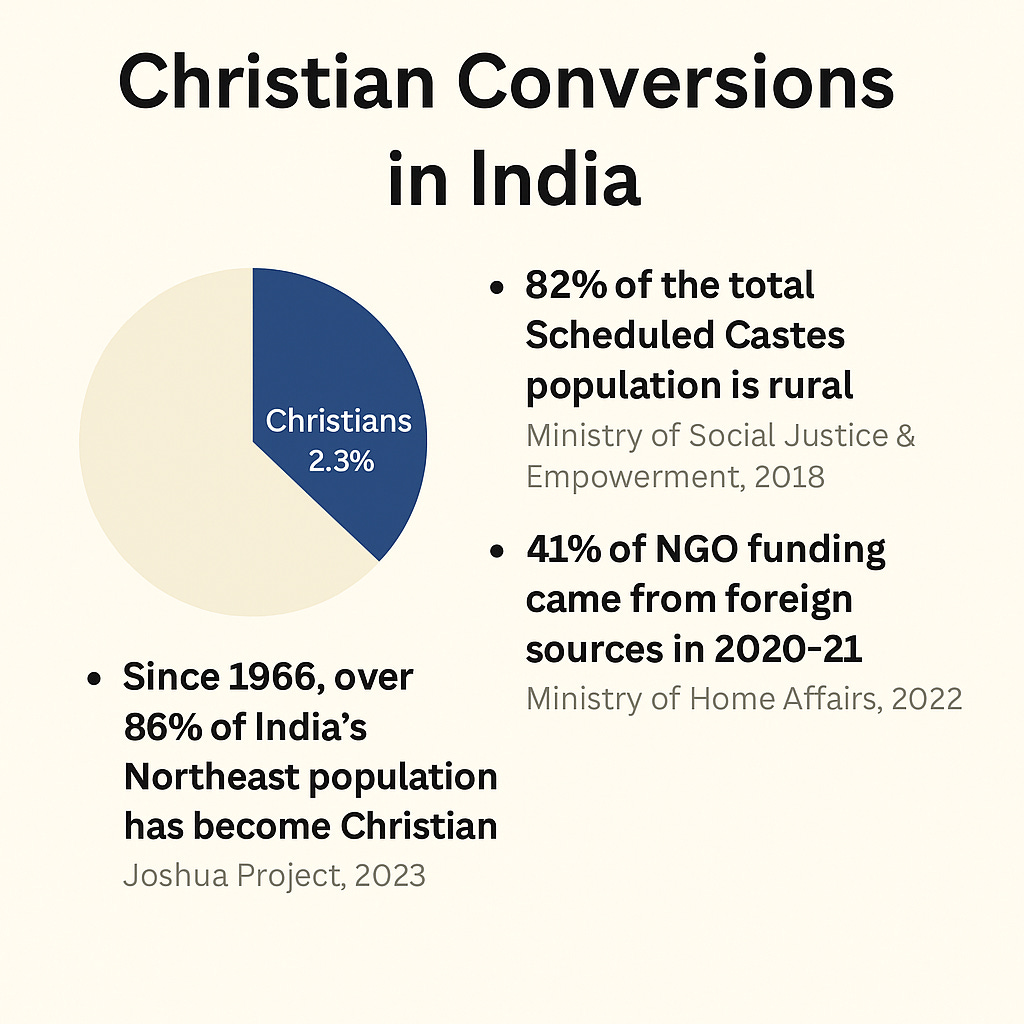Fault Lines of Faith: How Ideology Became India’s Quietest Border War
From colonial missions to NGO welfare, India’s cultural landscape faces a slower, softer battle — fought not with weapons, but with schools, subsidies, and stories.
Every empire carried a scripture; every civilisation answered with a philosophy.
From the fifteenth century onward, Europe exported not only goods but gospel.
The Americas turned Christian within a century; Africa followed in the colonial age.
When the wave reached Asia, China’s bureaucracy and India’s plural civilisation proved harder to breach.
So the strategy shifted: build bases where borders blur and governance thins — India’s Northeast, later Kerala, Andhra, Tamil Nadu, Punjab — places where welfare spoke louder than scripture.
Today, this old current flows through new pipes: NGOs, activist fronts, and digital faith content.
Most serve sincerely; a few serve ideology.
The difference is transparency.
Visual summary of how faith and ideology travelled from conquest to conversion to welfare — and why India now stands at a civilisational crossroads
Rural Ambedkarism and the New Ideological Economy
Ambedkar’s revolution sought dignity through law and learning.
But in parts of rural India, its NGO afterlife often monetises grievance instead of ending it.
When caste mobilisation and missionary welfare operate in the same districts, belief becomes another development indicator.
Pew’s 2021 survey shows national religious stability — 99 % of Hindus stay Hindu, 97 % of Muslims stay Muslim — yet tribal belts shift quickly, altering local education and politics.
The Governance Counter-Play
Left-Wing Extremism: down from 200 + districts to 38 (MHA 2024).
Foreign-funded NGOs: ~20 000 licenses cancelled since 2014 for opacity.
Temple trusts: collectively manage over ₹1 lakh crore; few publish audited welfare data.
India doesn’t need more control — it needs more sunlight.
Free temples into transparency.
Audit all faith charities equally.
Let 10 % of temple surpluses flow to local clinics, hostels, and women’s groups.
That’s dharma meeting data.
Dispatches by Beyond Coordinates / REAG Index
R – Resilience: 3 / 5 → Cultural confidence rising, but rural belts fragile.
E – Engagement: 3.5 / 5 → Policy vigilance high, delivery uneven.
A – Alignment: 3 / 5 → Caste + faith fault lines persist.
G – Geopolitics: 3.3 / 5 → Stable outward posture, inward noise.
(Beyond Coordinates Index = 3.2 / 5 — Conservative outlook)
(Dispatches by Beyond Coordinates Index — the Beyond Coordinates signature metric on civilisation, governance, and narrative resilience.)
Policy Notes
One Faith Transparency Code: same audit rules for temples, churches, madrasas.
Temple Welfare Mandate: dedicate fixed % to local education / health.
Heritage Schools: NCERT-aligned dharmic public schools for cultural parity.
District Risk Maps: data-based alerts on ideological polarisation.
Vedic Interlude — Beyond Coordinates Signature Reflection
“धर्मो रक्षति रक्षितः — Dharmo rakṣati rakṣitaḥ”
If you protect Dharma, Dharma protects you.Dharma is not a religion; it is the architecture of balance.
When governments act with fairness, when institutions serve with integrity, and when citizens practice restraint, they are all protecting Dharma in their own domains.
And in return, that Dharma—call it order, justice, or civilisation—protects the nation from decay.In a century of ideologies and algorithms, this remains India’s oldest and simplest survival code.
Closing Note
Dharma’s Second Renaissance
The West is exhausted by ideology; the East is rediscovering purpose.
India now sits where Europe once stood at the dawn of the Reformation—when faith, authority, and reason collided to create a new world. The difference is that India’s test will not be fought in cathedrals or parliaments, but in district offices, temples, and classrooms.
If the State learns to serve without control, if faith learns to give without converting, and if citizens learn to question without tearing apart, a new kind of civilisation will emerge—one that finally reconciles spirituality with accountability.
The choice is simple, not easy:
Either India reclaims Dharma as discipline, or the world will rewrite it as folklore.
Dharmo rakṣati rakṣitaḥ — protect righteousness, and righteousness will protect you.
That is not a verse. It is a national strategy.
— Beyond Coordinates




